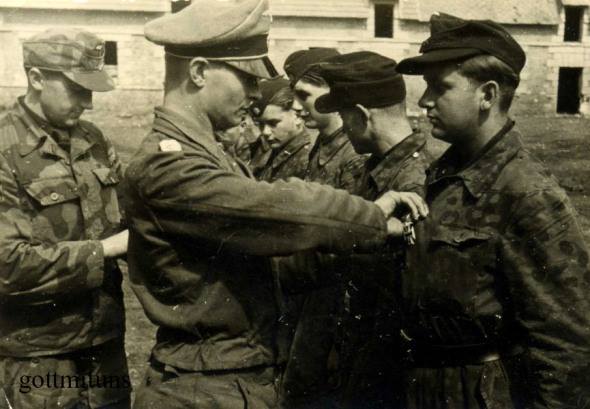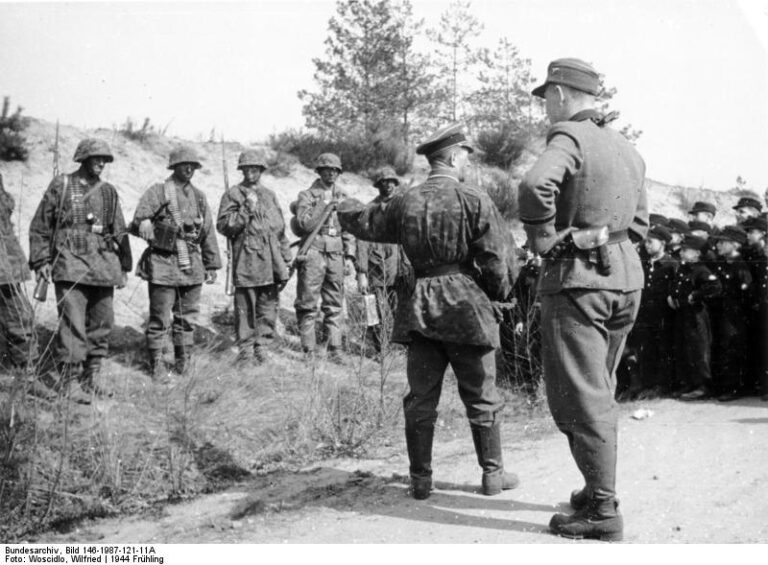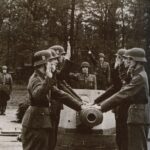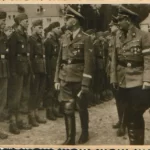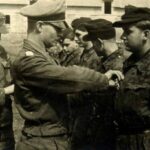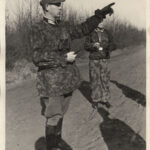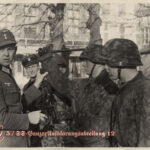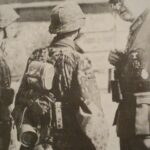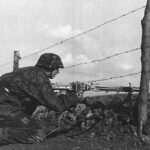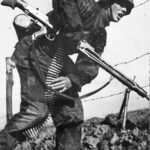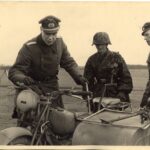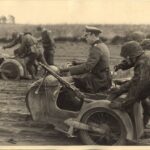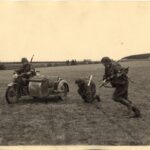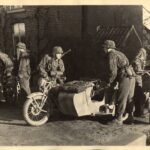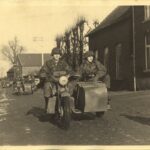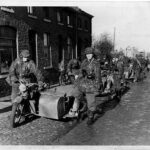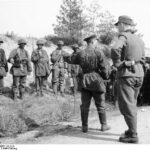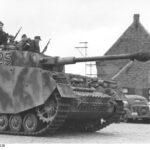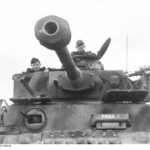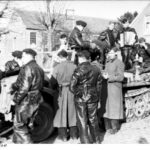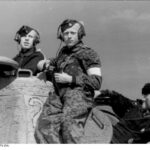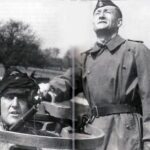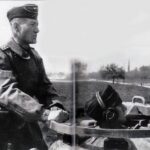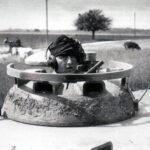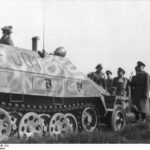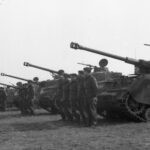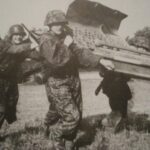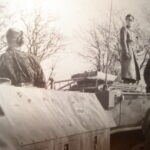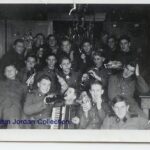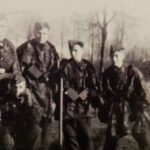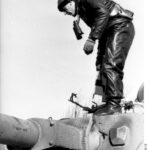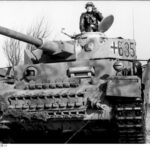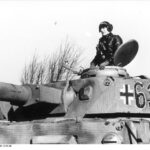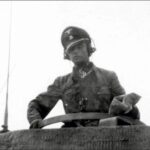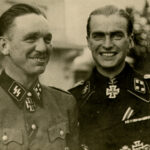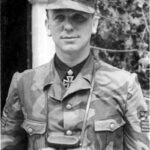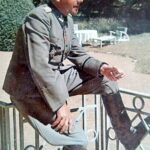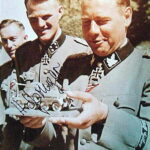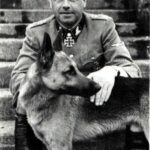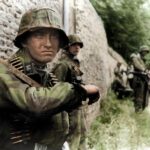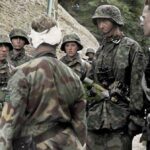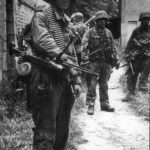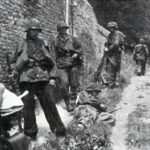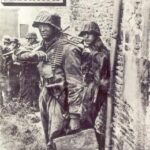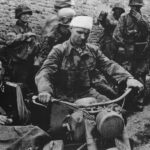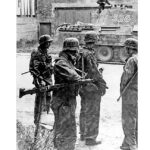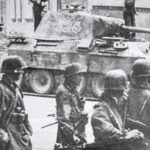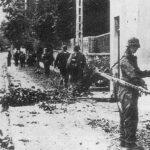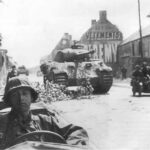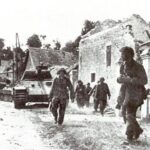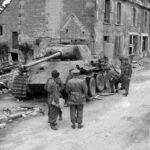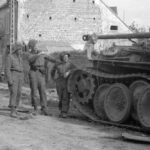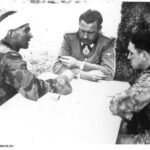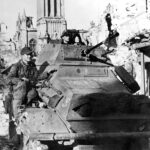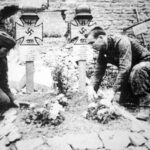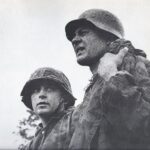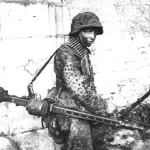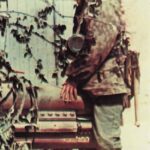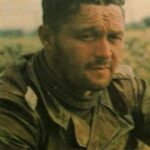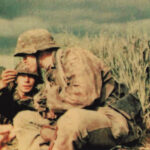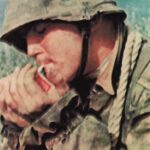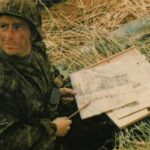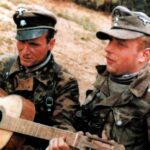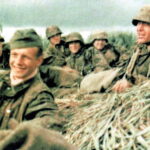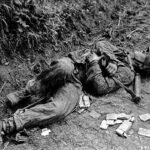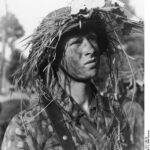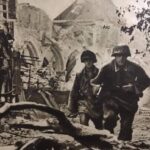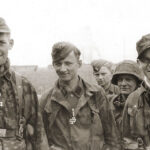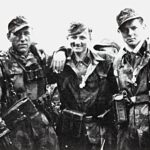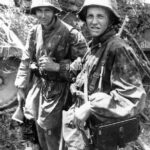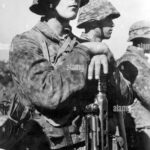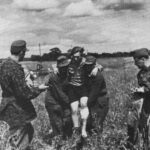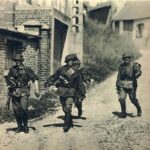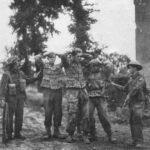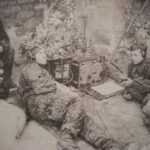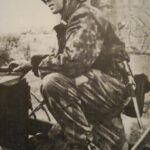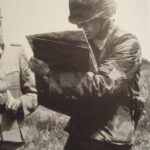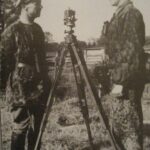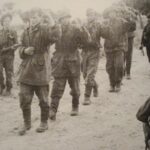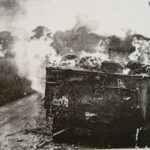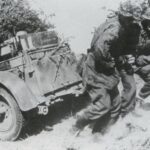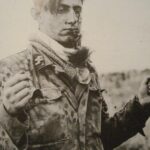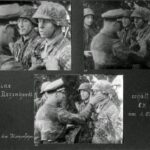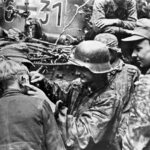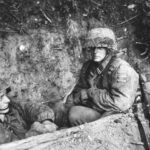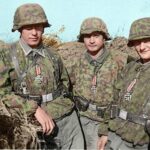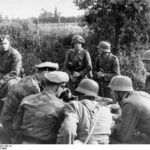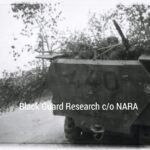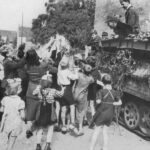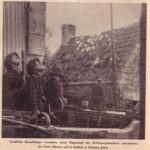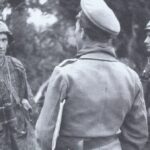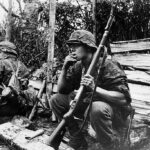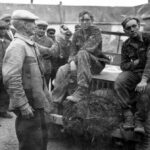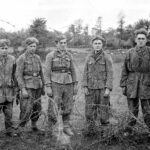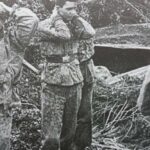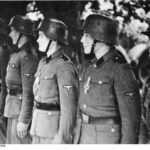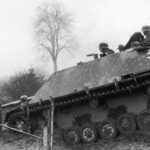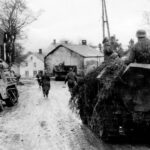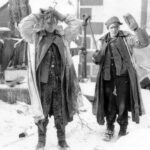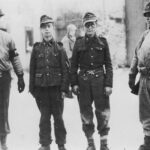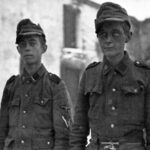Divisional History
FORmation
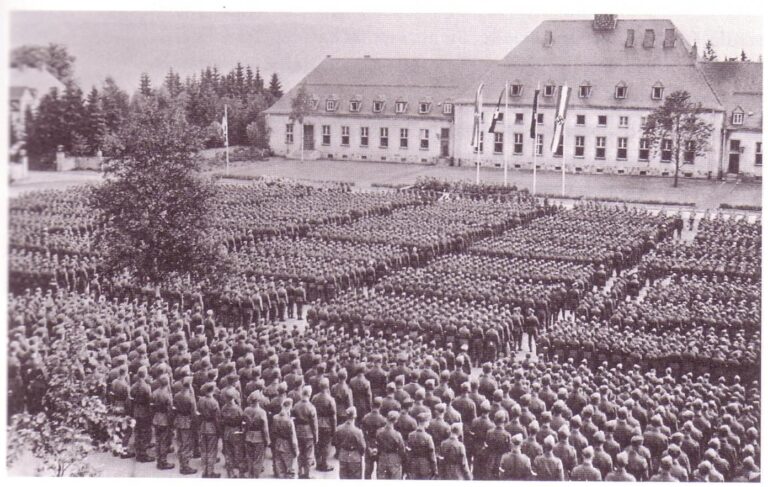
In early 1943, plans were put into motion to form a twelfth division of the Waffen-SS. Unlike some divisions which had been formed previously, it was not to be made up of foreigners, ethnic Germans, or a mixture of the two. After three years of war and now facing a serious manpower shortage, the Waffen-SS fell upon a vast, highly acceptable and all-German pool of recruits…….. the Hitlerjugend.
Recruiting started in the spring of 1943 and by mid summer the required number of recruits had been assembled at the Belgian military training area at Beverlo. The young volunteers of the division belonged to the age group born in 1926 and were 16-17 years old during the training. The officers of the new division came principally from the 1. SS Panzer Division ,,Leibstandarte SS Adolf Hitler”(LAH) and from other divisions of the Waffen-SS. There were also about fifty army officers among them who had originally been in the officer corps of the Hitlerjugend. As the LAH and other replacement units of the various arms of service could not provide sufficient amounts of NCO’s, young volunteers, after completing their basic training, were trained in the Waffen- SS NCO school in Lauenburg or in NCO courses within the Division and after successfully completing these, were employed as NCO’s.
Under the guidance of very capable officers, the Division carried out very thorough training. Most of the training was combat training in the field. Special emphasis was placed on firearms training in realistic combat conditions. In January 1944 the Division began to train as a body but it still struggled to find sufficient amounts of tanks and other vehicles. While waiting for the new vehicles, the Division used many captured French and Italian vehicles, mainly trucks and motorcycles. This problem was soon taken care of as the required number of German vehicles began to arrive. In early April 1944 the Division left Belgium and moved into the reserve area in Normandie between Vitmoutiers and Rouen. It was here that Generaloberst Heinz Guderian, inspector of the armored troops came to observe the Division in large scale exercises. Guderian was pleased and the 12. SS Panzer Division ,,Hitlerjugend” was declared fully operational and was to await the expected allied invasion of France.
Normandie
June, 1944
On June 6th, 1944 the Allied Armies landed on the beaches of Normandie, beginning the liberation of Europe. After hours of confusion Panzer group West finally issued the following orders to the 12th SS at 3:05 pm:
To 12th SS Panzer Division:
Division to move forward immediately north of the axis Alencon- Carrouges- Flers into the area around Evrecy. The division subordinated initially to the LXXXIV Army Corps.
Assignment:
Operating on the left flank of the 21st Panzer Division, throw the enemy west of the Orne into the sea and destroy him.
By 4:30 PM the 20,540 men of the Division were on the march from their various positions in Normandie with the intent on carrying out this order and smashing the Allied Armies on the beaches north-west of Caen. Traveling at night, the elements of the 12th SS were able to reach the front by early morning June 7th with relatively little hassle from enemy aircraft. After the forward reconnaissance units, the first elements of the Division to reach Caen were the 25th SS Panzer Grenadier Regiment under SS-Standartenfuhrer Kurt Meyer (Panzermeyer), the 2nd Battalion of the 12th SS Panzer Regiment (Prinz), and the 3rd Battalion of the 12th SS Panzerartillerie Regiment (Bartling). Meyer took up his command post in the Abbey Ardenne which was situated north-west of Caen and had large towers which provided an excellent view of the battlefield. From the Abbey, Meyer derived a plan for the counterattack of his kampfgruppe (battlegroup). The attack was planned for 4:00 PM and called for all three infantry battalions to attack abreast with the support of the five panzer kompanies and the artillery from the 3rd Battalion.
The situation changed rapidly however and Meyer was forced to change his plans because of increasing enemy pressure in the area. About 2:00 PM the forward elements of the 3rd Canadian Infantry Division were pressing south down the main road from Villons-Les- Buissons to Carpiquet where they planned to capture the airfield there. As the Canadian Armor and infantry passed through Authie towards Franqueville they were stunned by a violent counter-attack by the 12th SS Panzer Division. Sweeping through Authie and Buron, the III Battalion of the 25th Regiment and the 5th and 6th Panzer Kompanies annihilated C company of the North Nova Scotia Highlanders and badly mauled the rest of the battalion. The 12th SS also managed to destroy 28 Canadian Tanks and numerous other vehicles before pulling back to the Northern fringe of Authie.
At 3:00 PM the II Battalion attacked from it’s positions south of St. Contest with limited success which was hampered by the loss of it’s commander SS-Sturmbannfuhrer Hans Scappini. At 4:15 PM the I Battalion (Waldmuller) attacked with the support of the 8th Panzer Kompanie (Siegel). The Kampfgruppe reached Cambes where it was engaged by the right flank of the 3rd British Infantry Division. After destroying numerous enemy tanks and inflicting heavy losses, the Battalion pulled to the southern fringe of the village and entrenched itself in defensive positions.
The elements of Panzermeyer’s Kampfgruppe had stopped the enemy cold by 6:00 PM. But because of the withering Allied naval gunfire and his mounting casualties, he was forced to call off the attack and his whole regiment was ordered to dig in on the line they had gained.
During the early morning hours of June 8th, the 26th SS Panzer Grenadier Regiment under SS-Obersturmbannfuhrer Wilhelm Mohnke began to arrive at it’s jump off positions to the West of Meyer’s Kampfgruppe. They were given the order to attack and secure the villages of Norrey-en-Bessin, Bretteville-l’Orgueilleuse, Putot- en-Bessin, and Brouay. The Regiment went into battle without tank support and faced the 7th Brigade of the 3rd Canadian Infantry Division which was already dug into position in these villages.
It was also during the night of June 7th and 8th that a group of 18 Canadians were murdered in the court yard of Abbey Ardenne by young grenadiers of the 12th SS. Prisoners would rarley be taken by both sides during the normandy campaign.
At 3:00 am on June 8th, the I Battalion (Krause) advanced from Cheux towards Norrey-en-Bessin where they took over a group of buildings to the North-West called Cardenville and continued the advance. However the Canadian artillery was too strong and the Battalion was forced to dig in short of Norrey on the high ground along the Mue River. The II Battalion (Siebken) attacked Putot-en- Bessin around 6:00 am. In a violent sweep, the grenadiers soon had A,B,and C Companies of the Royal Winnipeg Rifles totally surrounded and nearly wiped them out as they tried to retreat under the cover of smoke. With the village now in German hands the Canadians counterattacked about 9:30 pm with an infantry battalion, an armored squadron and several companies of a machine gun battalion. The numerically superior enemy with tank support forced the SS to pull to the southern fringe of the village and dig into positions there. The III Battalion (Olboeter) moved into action about 8:00 am and attacked the village of Brouay and the woods to the south-west with little hassle from the enemy. The village was found unoccupied and the grenadiers dug into defensive positions in this area.
To the west, the 12th SS Reconnaissance Battalion under SS- Sturmbannfuhrer Gerhard Bremer was given the task of holding the division’s left flank. under increasing pressure the battalion was forced to pull back into line across Cristot to Brouay where it was linked to the 3rd Battalion of the 26th Regiment on the right and to the Panzer Lehr Division on the left.
The main body of the Division was now on the defensive on the line it had gained in the first hours of it’s counter-attacks on June 7th and 8th. The Allies had been dealt a serious setback, since their D-Day objective was to capture Caen and the Carpiquet Airfield there. In fact, the Allies, despite the advantage of naval gunfire, control of the skies, and numerically superior tanks and personnel were not able to capture Caen for 33 days mainly because of the fanatical fighting qualities of the 12th SS Panzer Division.
Along the line of the 12th SS, the Canadian held village of Norrey-en-Bessin was protruding into the German lines like an enemy finger. The 12th SS was determined to take the village and establish a solid line from Bremer’s reconnaissance battalion on the left to Waldmuller’s 1st battalion to the extreme right. To accomplish this, an attack was planned for the night of June 8th to take Bretteville and would use the Reconnaissance Company of the 25th SS Panzer Grenadier Regiment and the 1st and 4th Kompanies (Panthers) from the I Battalion (Jurgensen) of the 12. SS Panzer Regiment which had just arrived at the front.
With Kurt Meyer leading in his BMW and side car (Meyer had promised his recon company that he would join them in their baptism of fire) the column rolled from Rots towards the objective of Bretteville and fought all night in and around the village. Although the attack was initially a success, the Germans were forced to call off the attack because of stiff Allied resistance and lack of support from the infantry of Mohnke’s 26th Panzer Grenadier Regiment who were unable to advance.
Two more times the 12th SS would try to crack the Allied hold on Norrey-en-Bessin without success mainly because of the tenacious fighting of the Regina Rifle Regiment who held the town. Further attacks on this village were postponed because of enemy attacks coming from this vicinity.
On June 14th the Divisional Commander of the 12th SS, SS- Brigadefuhrer Fritz Witt was killed by naval gunfire at his headquarters in Venoix. The Division was then handed over to SS- Standartenfuhrer Kurt Meyer and the 25th Regiment went to SS- Obersturmbannfuhrer Milius.
The rest of June consisted of some stinging defeats for the British and Canadian Armies as they unsuccessfully tried to take the positions of the 12th SS. During the four weeks after the invasion the 12th SS was always at the focal point of the fighting for Caen and successfully repelled all attempts of the Allies to take the city despite superior numbers and complete air supremacy. This, however drained the 12th SS of the much needed manpower for the planned counter-attack toward the sea and it never did happen. By the first week of July the Allies had massed such an amount of men and material outside of Caen that the 12th SS had no choice but to withdraw south of the city to take up new positions. The Allies finally moved into Caen on July 9th, 33 days after the invasion.
july-november, 1944
On July 19th the 12th SS was in action again. This time it was the British-Canadian Operation Goodwood that drew them into the fighting. By July 20th the attack had been stopped near Vimont and the 12th SS remained in line there for the next two weeks. The 12th SS was then pulled out of the line and formed the reserve of the I SS Panzer Corps. Being the only mobile reserve in the area, the 12th SS was turned into a fire brigade and was continually hurled into the breaches of the line to seal off breakthroughs of greatly superior enemy forces. During the first weeks of August, the 12th SS played a decisive role in halting two separate offensives of the First Canadian Army. Operation Totalize and Tractible were stopped in their tracts between Caen and Falaise by the typical tenacious combat techniques of the 12th SS. In Operation Totalize, the remaining 60 tanks of the Division were faced by 600 tanks of the Allied Armies! In some cases grenadiers tied explosives to their bodies and jumped onto the enemy tanks, destroying the tank and themselves. Operation Tractible was the last drive towards Falaise and the 12th SS managed to stop it on the last ridge before the city. The next day the Canadians broke into Falaise from the west and in an act of defiance, 50-60 SS Grenadiers fought to the last man in the cities Ecole Superieure.
Withdrawing to the west, the Division was placed on the northern side of the pocket now being formed around Chambois. Meyer was given the order from the 7th Army to hold the northern side of the pocket open allowing as many German troops out as possible. It was about this time that SS-Obersturmbannfuhrer Max Wunsche was captured by the British. He had just been awarded the Oakleaves to the Knights Cross in recognition for SS PZ RGT 12’s actions in Normandie. In a period of two months, his unit had destroyed no fewer than 250 enemy tanks. On August 20th the 12th SS Panzer Division pulled out of the Falaise pocket and crossed the Seine river ending their campaign in Normandie.
After a short time to rest and refit, the Division was at the front again. This time the 12th SS was covering the German withdrawal from France. On September 6th, near the franco-Belgian border, SS-Oberfuhrer Kurt Meyer was captured by the Americans as the rest of the Division fought with the advancing GI’s trying to enter Belgium.
In November, the Division was transferred to Germany where it linked up with it’s Replacement Battalion at Nienburg 60 KM south of Bremen. At this time the 12th SS took on the much needed replacements, tanks, and equipment. Most of the personnel came from the Kriegsmarine and the Luftwaffe. After the capture of Kurt Meyer, the Division was under the command of SS- Obersturmbannfuhrer Hubert Meyer until it arrived in Germany. In November, SS-Standartenfuhrer Hugo Kraas took command of the Division and it was assigned to the 6th Panzer Army under Sepp Dietrich.
Unternehmen wacht am rhein
December 1944-45
On December 16th, 1944 the 12th SS took an active role in the Ardennes Offensive. Starting on the northern sector, the Division was given the right flank of the 6th Panzer Army to protect as it moved forward towards Malmedy. Stiff Allied resistance forced the Division to swing left and follow the path of the Leibstandarte. By New Years Day 1945 the 12th SS was one of the many German units forming the ring around Bastogne. The German front was under heavy pressure from the flanks of the salient and the troops, including those of the HJ Division were forced to withdraw. By January 18 the German armies had returned to the positions they had held before the offensive had begun.
Unternehmen Frühlingserwachen
Spring 1945
There would be no time for rest because on January 20th the entire 6th Panzer Army was ordered to the east. The plan was to attack Russian elements who had surrounded Budapest and had trapped German units there. Before the end of the month, the Division was transferred by rail to Hungary. Being in Army group South it was one of the first to arrive. In early February, before the attack was launched, HJ and elements of the Leibstandarte attacked and successfully destroyed a Russian bridgehead which had been established on the River Gran. On March 6th the main operation started and the 12th SS advanced along the northern side of Lake Balaton. After limited success, the attack bogged down in the Spring mud at Danube.
By the middle of March, the 12th SS was on the retreat heading for Austria. By April 13th, the Division was forced west of Vienna passing Odenburg and Hirtenburg and finally arriving near Linz and the Americans. On May 8th the division crossed the demarcation line near the town of Enns and entered American captivity. Proud and defiant until the end, they refused to comply with the American order that their vehicles be draped with white flags as a token of surrender.
Kapitulation
By the middle of March, the 12th SS was on the retreat heading for Austria. By April 13th, the Division was forced west of Vienna passing Odenburg and Hirtenburg and finally arriving near Linz and the Americans. On May 8th the division crossed the demarcation line near the town of Enns and entered American captivity. Proud and defiant until the end, they refused to comply with the American order that their vehicles be draped with white flags as a token of surrender.

